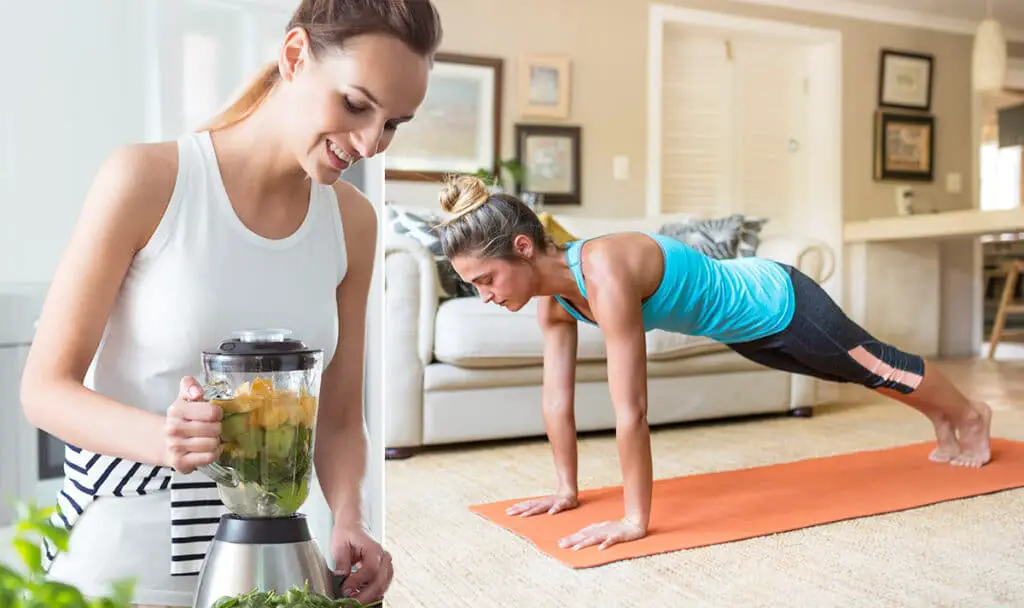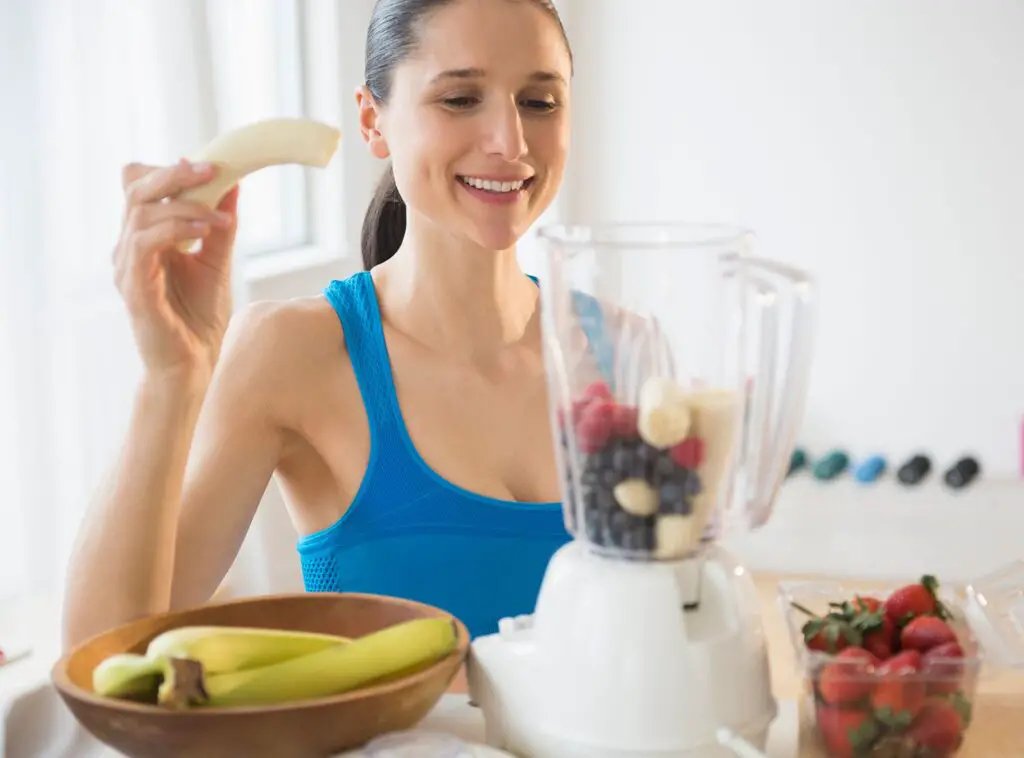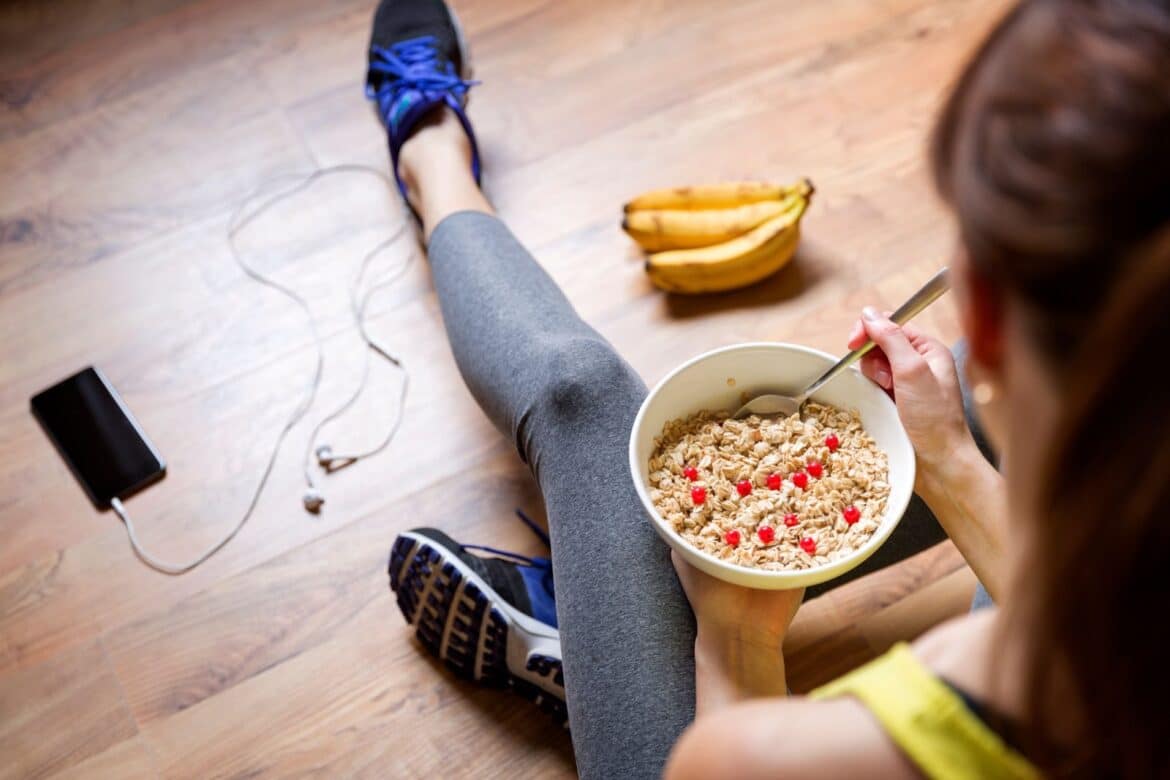Introduction
What To Eat Before Pilates: Fueling your body properly before engaging in any physical activity is essential to ensure you have the energy and stamina needed to perform at your best. Pilates, a low-impact exercise method that focuses on core strength, flexibility, and overall body awareness, is no exception. Whether you’re a seasoned Pilates enthusiast or just starting out, what you eat before your Pilates session can significantly impact your performance and overall experience. In this guide, we will explore the importance of pre-Pilates nutrition and provide you with some helpful tips on what to eat before your next Pilates class to optimize your workout and feel your best.
Everyone’s body is different, and what works best for one person may not be the same for another. Experiment with different pre-Pilates foods to see what makes you feel the most comfortable and energized during your sessions. Consider your personal preferences and dietary restrictions when choosing your pre-Pilates meal. If you follow a specific diet, like vegetarian or gluten-free, there are plenty of options available to accommodate your needs.
Pay attention to how your body responds to different foods before Pilates. If certain foods make you feel sluggish or uncomfortable during your workout, adjust your pre-Pilates diet accordingly. For personalized nutrition advice tailored to your specific goals and needs, consider consulting a registered dietitian or nutritionist. They can help you create a pre-Pilates meal plan that aligns with your fitness goals and dietary preferences.

What should you eat before a Pilates class?
MINI SNACK BEFORE PILATES SESSION
* You should go for a mini snack but only 30-45 minutes before the session. * You can opt for myriad healthy options like raw nuts, banana and almond butter, hardboiled egg to healthier protein bar and cheese. *Choosing organic food would be a big boost to the overall good work.
Timing Matters
The timing of your pre-Pilates meal is crucial. Ideally, you should eat a balanced meal or snack about 1-2 hours before your class. This allows your body enough time to digest and convert the food into energy without causing discomfort during your workout. Eating too close to your session can lead to bloating or sluggishness, while an empty stomach might leave you feeling weak and fatigued.
Stay Hydrated
In addition to eating the right foods, it’s crucial to stay hydrated before your Pilates class. Dehydration can lead to decreased performance and muscle cramps. Drink water throughout the day leading up to your session, and if needed, have a small glass of water 30 minutes before class.
Avoid Heavy, Greasy, or Spicy Foods
While it’s important to eat before Pilates, it’s equally important to avoid certain foods that may cause discomfort. Steer clear of heavy, greasy, or spicy meals as they can lead to indigestion, bloating, or heartburn during your class.
Listen to Your Body
Ultimately, the best pre-Pilates meal is one that works for your body. Everyone is different, so it’s essential to pay attention to how different foods make you feel before a workout. Experiment with various options to find what gives you the right amount of energy without causing digestive issues or discomfort.
Should you eat before or after Pilates?
It’s best to aim to eat something about 30 minutes after class because that’s when your body will be begging for glycogen that it lost while you were in class. One of the best things (that also happens to be quick and easy) that you can eat post-workout is a nutrient-dense protein shake or smoothie.
Finding the Right Balance
Light Pre-Pilates Snack: If you prefer eating before your session, opt for a light snack about 1-2 hours before class. Something easily digestible like a piece of fruit or yogurt can provide the necessary energy without causing discomfort.
Post-Pilates Recovery: After your Pilates class, have a balanced meal or snack within 2 hours to support muscle recovery. This meal should include a mix of carbohydrates and protein to replenish energy stores and repair muscle tissue.
Hydration: Regardless of when you choose to eat, staying hydrated is essential. Drink water throughout the day and consider a small glass of water 30 minutes before your class.
Listen to Your Body: Pay attention to how your body responds to eating before or after Pilates. Everyone is different, and you may need to experiment to find what works best for you.
Should I eat before a Pilates workout?
A small snack should help to preserve the energy needed for what our Pilates and Pilates reformer instructors have in store for you. Don’t forget — timing is everything. Try to leave at least an hour after eating, before the start of class.
Pros of Eating Before a Pilates Workout
Energy Boost: Consuming a light meal or snack before Pilates can provide you with an energy boost. This added energy can help improve your overall performance during the class.
Blood Sugar Regulation: Eating before a workout can help stabilize your blood sugar levels. This is particularly important if you have a long gap between your last meal and your Pilates session, as it can prevent energy dips and fatigue during your workout.
Enhanced Focus: Proper nourishment before exercise can enhance your mental focus and concentration, allowing you to execute movements with better precision and control.
Cons of Eating Before a Pilates Workout
Digestive Discomfort: Consuming a heavy or large meal right before Pilates may lead to discomfort, bloating, or sluggishness during the session. This can impact your ability to engage your core and perform movements effectively.
Timing Challenges: To avoid digestive issues, you need to time your pre-Pilates meal or snack carefully. Eating too close to your class can lead to discomfort, while eating too far in advance might leave you feeling hungry during your workout.
Should you do Pilates on an empty stomach?
Since there is so much emphasis in Pilates on using your abdominal muscles, you will want to have a fairly empty stomach. Your core will be fully engaged and it’s best that you have eaten only lightly at your last meal. You will probably tolerate it best to have a small snack an hour or two before your class.
Pros of Doing Pilates on an Empty Stomach
Enhanced Fat Burning: Exercising in a fasted state may encourage your body to burn stored fat for energy, potentially promoting fat loss. However, this effect is more noticeable during longer, more intense workouts than during a typical Pilates session.
Reduced Digestive Discomfort: Exercising on an empty stomach can minimize the risk of digestive discomfort, such as bloating or cramping, during your Pilates session.
Better Mind-Body Connection: Some people find that practicing Pilates on an empty stomach helps them maintain better mental focus and mind-body connection.
Cons of Doing Pilates on an Empty Stomach
Decreased Energy Levels: Exercising without any food in your system can lead to decreased energy levels, making it challenging to perform at your best during a Pilates class.
Muscle Fatigue: Your muscles may fatigue more quickly without readily available glycogen (stored energy from carbohydrates), which can limit your performance.
Risk of Low Blood Sugar: For individuals with low blood sugar or hypoglycemia, exercising on an empty stomach can lead to dizziness, lightheadedness, or even fainting.
Reduced Intensity: Pilates is a low-impact exercise, but if your goal is to increase strength and intensity during your session, you might find it challenging to do so without some pre-workout fuel.
Is it OK to do Pilates after eating?
Regardless of what you eat, nutrition experts recommend you wait two to three hours after eating before you exercise. Another consideration is that if you skip breakfast or it’s been too many hours since you’ve eaten, you may run out of energy in the middle of your workout. It’s best to eat at least a light snack.
Light Pre-Pilates Snack
If you feel the need to eat something before your Pilates class and it’s within an hour or so of your workout, opt for a light and easily digestible snack. Some suitable options include a piece of fruit, a small serving of yogurt, a handful of nuts, or a whole-grain cracker with nut butter. These snacks provide quick energy without overwhelming your digestive system.
Hydration is Key
Staying hydrated is essential before, during, and after your Pilates session. Ensure you drink enough water throughout the day leading up to your workout. You may also consider having a small glass of water 30 minutes before your class to help keep you hydrated during the exercise.
Listen to Your Body
Everyone’s body responds differently to eating before exercise. Pay close attention to how your body feels. If you find that eating before Pilates makes you uncomfortable or sluggish, you may prefer to practice on an empty stomach or with just a light snack. On the other hand, if you feel fatigued or lightheaded during your workout, it could be a sign that you need a small meal or snack beforehand.
Can I drink water before Pilates?
Drink steadily during the day and aim to drink around 450ml of fluid two to four hours before your exercise as it takes time for fluids to be absorbed into your body.
Signs of Proper Hydration
To gauge your hydration level, pay attention to the color of your urine. Pale, light yellow urine is a good indicator of proper hydration. Dark yellow or amber urine may suggest dehydration, in which case you should drink more water.
During Pilates
While it’s crucial to hydrate before your Pilates class, it’s also a good practice to have a water bottle with you during your workout. Most Pilates studios provide water stations or allow you to bring your own bottle. Take small sips of water between exercises if needed, but avoid drinking excessively during the class, as it may cause discomfort.
After Pilates
Rehydration after your Pilates session is just as important as pre-hydration. Within 2 hours of your workout, have a balanced meal or snack and continue to drink water to replace any fluids lost during exercise.
Do I need protein for Pilates?
extra tip: Boost Protein Intake
Protein is slow-digesting energy that supports the endurance for Pilates workouts. Proteins also create a feeling of fullness, so adjust your eating/workout schedule accordingly.
How to Incorporate Protein into Your Pilates Diet
Balanced Meals: Include a source of lean protein in your meals throughout the day. Good options include chicken, turkey, lean beef, fish, tofu, tempeh, legumes (beans and lentils), and low-fat dairy or dairy alternatives.
Post-Pilates Nutrition: After your Pilates session, aim to have a balanced meal or snack that includes protein within 2 hours. This will help with muscle recovery and replenishing energy stores. Options include a chicken salad, a smoothie with protein powder, or Greek yogurt with berries.
Pre-Pilates Snack: If you practice Pilates later in the day and haven’t had a meal in a while, consider having a light protein-rich snack about 1-2 hours before your class. This can provide sustained energy without causing digestive discomfort.
Protein Timing for Muscle Building: If you’re using Pilates as part of a broader fitness routine aimed at building muscle, you may want to increase your protein intake and consider consuming a source of protein shortly after your Pilates session. This can aid in muscle recovery and growth.
What should I do before starting Pilates?
First, read up on Pilates exercise and its many benefits. This will help you to feel more confident and motivated to give it a try. You can also talk to the instructor before class begins and let them know that you’re new to Pilates. They will be happy to answer any questions you have and help you feel at ease.
Consult with a Healthcare Professional
Before beginning any new exercise program, it’s a good idea to consult with your healthcare provider, especially if you have underlying health concerns or medical conditions. They can provide guidance on whether Pilates is a safe and appropriate choice for you, taking into account your individual health status.
Find a Qualified Instructor
Pilates is best learned and practiced under the guidance of a certified and experienced instructor. Look for instructors who have completed comprehensive Pilates training programs and have certifications from reputable organizations like the Pilates Method Alliance (PMA) or the Balanced Body Instructor Training Program. A skilled instructor can provide personalized instruction and ensure you perform exercises correctly and safely.
Set Clear Goals
Determine what you hope to achieve with your Pilates practice. Are you looking to improve core strength, flexibility, posture, or overall fitness? Setting clear goals will help you and your instructor tailor your Pilates sessions to meet your specific needs and expectations.
Choose the Right Pilates Class
Pilates offers various class formats, from mat Pilates to equipment-based Pilates using machines like the Reformer, Cadillac, and more. Discuss your goals and preferences with your instructor to determine which class format is most suitable for you.

Conclusion
Incorporating proper nutrition into your pre-Pilates routine is a key factor in enhancing your overall performance, energy levels, and comfort during your workout sessions. By prioritizing balanced meals that include carbohydrates, protein, and healthy fats, you can ensure your body is adequately fueled for the demands of Pilates. Timing your pre-Pilates meal or snack, staying hydrated, and being attuned to your body’s responses are all crucial aspects of this practice.
Ultimately, there is no one-size-fits-all approach to what to eat before Pilates, as individual preferences and dietary needs vary. The key is to experiment and discover the foods that work best for you, providing sustained energy and helping you achieve your fitness goals. Whether you are aiming to increase strength, flexibility, or simply maintain a healthy lifestyle, a thoughtful approach to pre-Pilates nutrition can contribute significantly to your success in this enjoyable and rewarding exercise discipline.
If you have specific dietary restrictions or health conditions, such as diabetes, it’s important to consult with a healthcare provider or registered dietitian for personalized guidance on what to eat before Pilates. Remember that everyone’s body is unique, so what works best for one person may not work for another. It’s essential to find a pre-Pilates eating plan that suits your individual needs, preferences, and goals. Experiment with different foods and meal timings to determine what helps you feel your best during your Pilates sessions.

